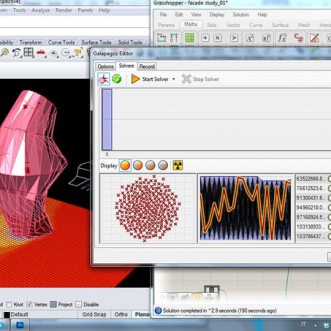Evolutionary problem solving mimics the theory of evolution employing the same trial-and-error methods that nature uses in order to arrive at an optimized result. When automated for specific parameters and results, this technique becomes an effective way to computationally drive controlled results within the iterative design process – allowing designers to produce optimized parameters resulting in a form, graphic or piece of data that best meets design criteria. In this post we walk you through the process of using Galapagos, an evolutionary solver for Rhino/ Grasshopper, and show an example of how this method can be tied in with analysis tools to optimize form based on energy data. To see video go to
